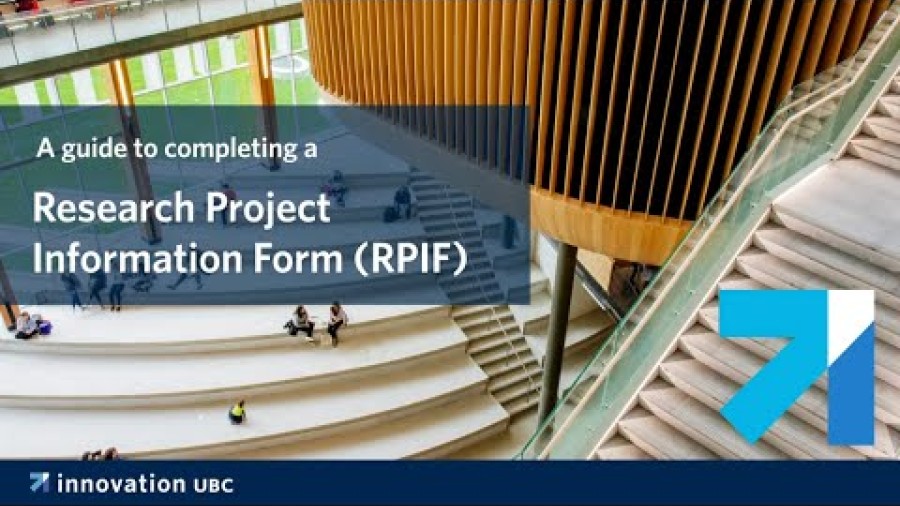
BEFORE YOU HIT SUBMIT: 10 TIPS FOR COMPLETING YOUR RPIF
1. Ensure the PI is eligible for holding research spending responsibility
The Principal Investigator should be a UBC faculty member who is eligible for holding research spending responsibility.
Please ensure the listed PI in your project is eligible by referring to Article 4.1 of UBC Research Policy LR2.
2. Use an approved UBC or health authority email address
When inputting contact information, only use a UBC or health authority email address for contact - other email accounts like Gmail will not be approved.
3. Include direct, indirect and total costs in your budget
Oftentimes, an incorrect budget is a main reason an RPIF will be sent back to the submitter. Make sure this section is filled out completely - inclusive of direct, indirect and total costs - and that the amount indicated on the RPIF matches the amount stated in the agreement.
Please note that indirect costs are calculated as a percentage of the direct costs, not the total costs. If the indirect costs recovery rate in your RPIF is different from the standard rate, we require the signature from the Dean’s office for approval to move forward.
Find details on budgeting and indirect costs at research.ubc.ca/indirect-costs
4. Specify where your grant should be set up
To avoid delays, make sure you specify which faculty, department, division or institute the grant (also known as the research account) should be set up.
5. Include all certificate and/or application numbers
To avoid delays, it is critical you include all certificate or application numbers in your RPIF upon submission. This is how our team determines if your agreement falls under the purview of Sponsored Research, and if so, what kind of agreement would be appropriate.
6. Review research ethics - even if you think this doesn’t apply to your project!
Before moving to section E, review the Research Ethics requirements for your project. Often researchers are not aware this is required for their specific project, and you will need to submit the proper applications so our team can proceed with processing the agreement. This is often the case with secondary use of data and samples collected under an existing Research Ethics Board application. Please ensure all necessary approvals are submitted and have this included in your RPIF when submitting to our team.
Learn more at researchethics.ubc.ca
7. Find out which service unit to send your RPIF to
All RPIFs including a grant application form should be sent to the Office of Research Services. For any RPIF sent to Sponsored Research - the answer in section E should be ‘no’ .
8. Ensure the contact information in section F, "Contact", matches your Primary Funding Source information in Section B
In section F, please list the contact of the entity from whom UBC is receiving funding. This must match what was listed as your Primary Funding Source in section B.
9. Review UBC’s Conflict of Interest Policy
Section G - Conflict of Interest - is often left open due to misinterpreting section E (Types of Funding). Please ensure you fill out this portion of the form and refer to UBC’s Conflict of Interest Policy prior to submitting.
Review UBC’s Conflict of Interest Policy (SC3)
10. It is the responsibility of the researcher to obtain all signatures
To complete your form, various signatures must be obtained. It is the responsibility of the researcher to complete this section and obtain all required signatures. After the department head and dean have signed the form, no changes should be made to the RPIF. If changes are required, the RPIF will need to be re-signed.
